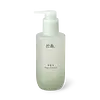What's inside
What's inside
 Key Ingredients
Key Ingredients

 Benefits
Benefits

 Concerns
Concerns

 Ingredients Side-by-side
Ingredients Side-by-side

Water
Skin ConditioningUrea
BufferingGlycerin
HumectantHydrogenated Poly(C6-14 Olefin)
EmollientCaprylic/Capric Triglyceride
MaskingCetyl Ethylhexanoate
EmollientMethylpropanediol
SolventPolyglyceryl-3 Methylglucose Distearate
EmulsifyingButyrospermum Parkii Butter
Skin ConditioningNiacinamide
SmoothingDimethicone
Emollient1,2-Hexanediol
Skin ConditioningStearyl Alcohol
EmollientCetyl Alcohol
EmollientGlyceryl Stearate
EmollientCarbomer
Emulsion StabilisingSodium Stearoyl Glutamate
CleansingDimethiconol
EmollientTromethamine
BufferingEthylhexylglycerin
Skin ConditioningAllantoin
Skin ConditioningXanthan Gum
EmulsifyingDisodium EDTA
Panthenol
Skin ConditioningMyristyl Alcohol
EmollientLauryl Alcohol
EmollientSalicylic Acid
MaskingBisabolol
MaskingGlutathione
Sodium Hyaluronate
HumectantHyaluronic Acid
HumectantHydrolyzed Hyaluronic Acid
HumectantHydrolyzed Sodium Hyaluronate
Skin ConditioningSodium Hyaluronate Crosspolymer
HumectantHydroxypropyltrimonium Hyaluronate
Sodium Acetylated Hyaluronate
HumectantPancratium Maritimum Extract
BleachingParfum
MaskingWater, Urea, Glycerin, Hydrogenated Poly(C6-14 Olefin), Caprylic/Capric Triglyceride, Cetyl Ethylhexanoate, Methylpropanediol, Polyglyceryl-3 Methylglucose Distearate, Butyrospermum Parkii Butter, Niacinamide, Dimethicone, 1,2-Hexanediol, Stearyl Alcohol, Cetyl Alcohol, Glyceryl Stearate, Carbomer, Sodium Stearoyl Glutamate, Dimethiconol, Tromethamine, Ethylhexylglycerin, Allantoin, Xanthan Gum, Disodium EDTA, Panthenol, Myristyl Alcohol, Lauryl Alcohol, Salicylic Acid, Bisabolol, Glutathione, Sodium Hyaluronate, Hyaluronic Acid, Hydrolyzed Hyaluronic Acid, Hydrolyzed Sodium Hyaluronate, Sodium Hyaluronate Crosspolymer, Hydroxypropyltrimonium Hyaluronate, Sodium Acetylated Hyaluronate, Pancratium Maritimum Extract, Parfum
Water
Skin ConditioningGlycerin
HumectantLauryl Glucoside
CleansingCocamidopropyl Betaine
CleansingCoco-Glucoside
CleansingXanthan Gum
EmulsifyingCitric Acid
BufferingPropanediol
SolventBetaine
HumectantAcetyl Glucosamine
Skin ConditioningCaprylyl Glycol
EmollientThymus Vulgaris Oil
MaskingButylene Glycol
HumectantGlyceryl Caprylate
EmollientEthylhexylglycerin
Skin ConditioningDisodium EDTA
1,2-Hexanediol
Skin ConditioningActinidia Chinensis Seed
AbrasiveAngelica Archangelica Root Extract
MaskingCallitris Columellaris Leaf/Wood Extract
AntioxidantTocopherol
AntioxidantWater, Glycerin, Lauryl Glucoside, Cocamidopropyl Betaine, Coco-Glucoside, Xanthan Gum, Citric Acid, Propanediol, Betaine, Acetyl Glucosamine, Caprylyl Glycol, Thymus Vulgaris Oil, Butylene Glycol, Glyceryl Caprylate, Ethylhexylglycerin, Disodium EDTA, 1,2-Hexanediol, Actinidia Chinensis Seed, Angelica Archangelica Root Extract, Callitris Columellaris Leaf/Wood Extract, Tocopherol
Ingredients Explained
These ingredients are found in both products.
Ingredients higher up in an ingredient list are typically present in a larger amount.
1,2-Hexanediol is a synthetic liquid and another multi-functional powerhouse.
It is a:
- Humectant, drawing moisture into the skin
- Emollient, helping to soften skin
- Solvent, dispersing and stabilizing formulas
- Preservative booster, enhancing the antimicrobial activity of other preservatives
Disodium EDTA plays a role in making products more stable by aiding other preservatives.
It is a chelating agent, meaning it neutralizes metal ions that may be found in a product.
Disodium EDTA is a salt of edetic acid and is found to be safe in cosmetic ingredients.
Learn more about Disodium EDTAEthylhexylglycerin (we can't pronounce this either) is commonly used as a preservative and skin softener. It is derived from glyceryl.
You might see Ethylhexylglycerin often paired with other preservatives such as phenoxyethanol. Ethylhexylglycerin has been found to increase the effectiveness of these other preservatives.
Glycerin is already naturally found in your skin. It helps moisturize and protect your skin.
A study from 2016 found glycerin to be more effective as a humectant than AHAs and hyaluronic acid.
As a humectant, it helps the skin stay hydrated by pulling moisture to your skin. The low molecular weight of glycerin allows it to pull moisture into the deeper layers of your skin.
Hydrated skin improves your skin barrier; Your skin barrier helps protect against irritants and bacteria.
Glycerin has also been found to have antimicrobial and antiviral properties. Due to these properties, glycerin is often used in wound and burn treatments.
In cosmetics, glycerin is usually derived from plants such as soybean or palm. However, it can also be sourced from animals, such as tallow or animal fat.
This ingredient is organic, colorless, odorless, and non-toxic.
Glycerin is the name for this ingredient in American English. British English uses Glycerol/Glycerine.
Learn more about GlycerinWater. It's the most common cosmetic ingredient of all. You'll usually see it at the top of ingredient lists, meaning that it makes up the largest part of the product.
So why is it so popular? Water most often acts as a solvent - this means that it helps dissolve other ingredients into the formulation.
You'll also recognize water as that liquid we all need to stay alive. If you see this, drink a glass of water. Stay hydrated!
Learn more about WaterXanthan gum is used as a stabilizer and thickener within cosmetic products. It helps give products a sticky, thick feeling - preventing them from being too runny.
On the technical side of things, xanthan gum is a polysaccharide - a combination consisting of multiple sugar molecules bonded together.
Xanthan gum is a pretty common and great ingredient. It is a natural, non-toxic, non-irritating ingredient that is also commonly used in food products.
Learn more about Xanthan Gum